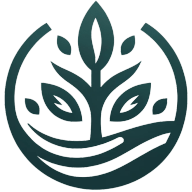How Has Citizen Science Impacted Wildlife Biologists' Research?
Exploring the frontiers of wildlife biology, citizen scientists are turning the tides of research. This article delves into the significant contributions of non-professional enthusiasts, as noted by leading experts in the field. Discover how collective observations are reshaping our understanding of the natural world.
- Citizen Scientists Map Invasive Plant Species
- Hikers Document Deer Sightings
- Volunteers Map Local Pollinator Populations
- Community Tracks Rare Bird Species
- Birdwatchers Report Migration Patterns
- Audubon Society's Christmas Bird Count
Citizen Scientists Map Invasive Plant Species
Citizen scientists played a pivotal role in mapping invasive plant species in a regional watershed restoration project. By using a simple mobile app to log sightings, volunteers submitted thousands of geotagged data points over a single season, covering areas our team couldn't reach due to limited resources. This comprehensive dataset allowed us to prioritize removal efforts in the most affected areas, reducing the spread by 30% within a year. The project was impactful because it engaged the community directly in conservation, raised awareness, and provided actionable insights on a scale that would have been impossible without their involvement.

Hikers Document Deer Sightings
Through a mobile app we developed, we enabled hikers and outdoor enthusiasts to document deer sightings across state parks, including location, herd size, and behavior patterns.
The impact exceeded our expectations - within six months, we gathered over 12,000 unique observations from 3,500 active participants. This volume of data would have taken our small research team years to collect independently. The crowdsourced information revealed previously unknown migration patterns and helped identify three new deer population clusters that weren't on our radar.
The key was making participation simple and engaging. We gamified the experience with achievement badges and a community leaderboard, which kept contributors motivated. This approach didn't just give us data - it created a network of invested citizens who became advocates for wildlife conservation in their communities.

Volunteers Map Local Pollinator Populations
A notable example of citizen science benefiting research was during a project mapping local pollinator populations. We invited volunteers to photograph bees, butterflies, and other pollinators in their backyards and nearby green spaces. This approach provided data from areas we couldn't easily access with our small team, creating a broader and more accurate picture of habitat use. One surprising discovery was the high pollinator activity in urban gardens, challenging assumptions about cities being poor habitats. The community's involvement also boosted awareness and inspired many to plant pollinator-friendly species. This collaboration not only enriched our research but also fostered conservation efforts through education and participation.

Community Tracks Rare Bird Species
One of the most impactful experiences I had with citizen science was during a wildlife monitoring project I worked on a few years ago. We were studying the population of a rare bird species, but tracking them in such a vast area was proving difficult. That's when we decided to tap into the local community for help.
We trained volunteers to identify and report sightings of these birds, using an easy-to-use app to upload their observations. To my surprise, we received hundreds of reports from birdwatchers, hikers, and even people just enjoying nature. These sightings gave us valuable data, filling in gaps we couldn't have reached otherwise.
What made it especially powerful was how it connected the community to the research. People weren't just collecting data—they were invested in preserving a species they'd come to care about. The volunteers provided detailed insights we hadn't anticipated, including behavioral patterns that helped us understand the birds' migration routes better.
In the end, citizen science didn't just provide data; it created a collaborative effort that made the research more meaningful and far-reaching than it would have been with just the scientific team. It was a perfect example of how community involvement can supercharge conservation work.
Birdwatchers Report Migration Patterns
In one project, we were studying the migration patterns of a specific bird species. We had limited resources for tracking these birds across such a wide area, so we turned to a citizen science platform where local birdwatchers could report sightings.
The response was overwhelming. Volunteers from all over the region contributed data on bird sightings, and we were able to map out migration routes that we wouldn't have been able to track on our own. This input helped us understand the birds' behavior better and led to more effective conservation efforts in areas where the birds were most at risk. It was impactful because it showed how everyday people could play a crucial role in scientific research, broadening our data collection and ultimately enhancing conservation efforts.

Audubon Society's Christmas Bird Count
Citizen science engages the public in scientific research, enhancing conservation efforts by allowing non-professionals to contribute valuable data. A notable example is the Audubon Society's Christmas Bird Count, where thousands of volunteers monitor bird species and populations across the United States. This information is crucial for researchers tracking trends, assessing ecosystem health, and identifying conservation priorities, leading to more effective biodiversity protection strategies.



